Disclosure: Meeple Mountain received a free copy of this product in exchange for an honest, unbiased review. This review is not intended to be an endorsement.
Ticket to Ride: Japan & Italy is the latest expansion for the Ticket to Ride base game and is the seventh released to date. This review assumes you are already familiar with the original Ticket to Ride rules and will only discuss the changes to its original gameplay. If you’re unfamiliar with Ticket to Ride, head on over to our Ticket to Ride love letter to learn more about how the game’s played.
What’s Included in Ticket to Ride: Japan & Italy
Ticket to Ride: Japan & Italy includes an enormous — eight panels compared to the original six — double-sided board: one side featuring the horizontal map of Japan, the other featuring a vertical map of Italy. In the expansion box, you’ll also find new Destination Ticket cards for both maps, Ferry cards for Italy, and Bullet Train miniatures and Progression markers for Japan.
Since this is an expansion, you need some components from one of the standalone Ticket to Ride games (Ticket to Ride, Ticket to Ride: Europe, etc…) to play either map. These components include the Train Car cards, as well as trains — the number of which depends on the map you’re using — and matching score markers for each player.
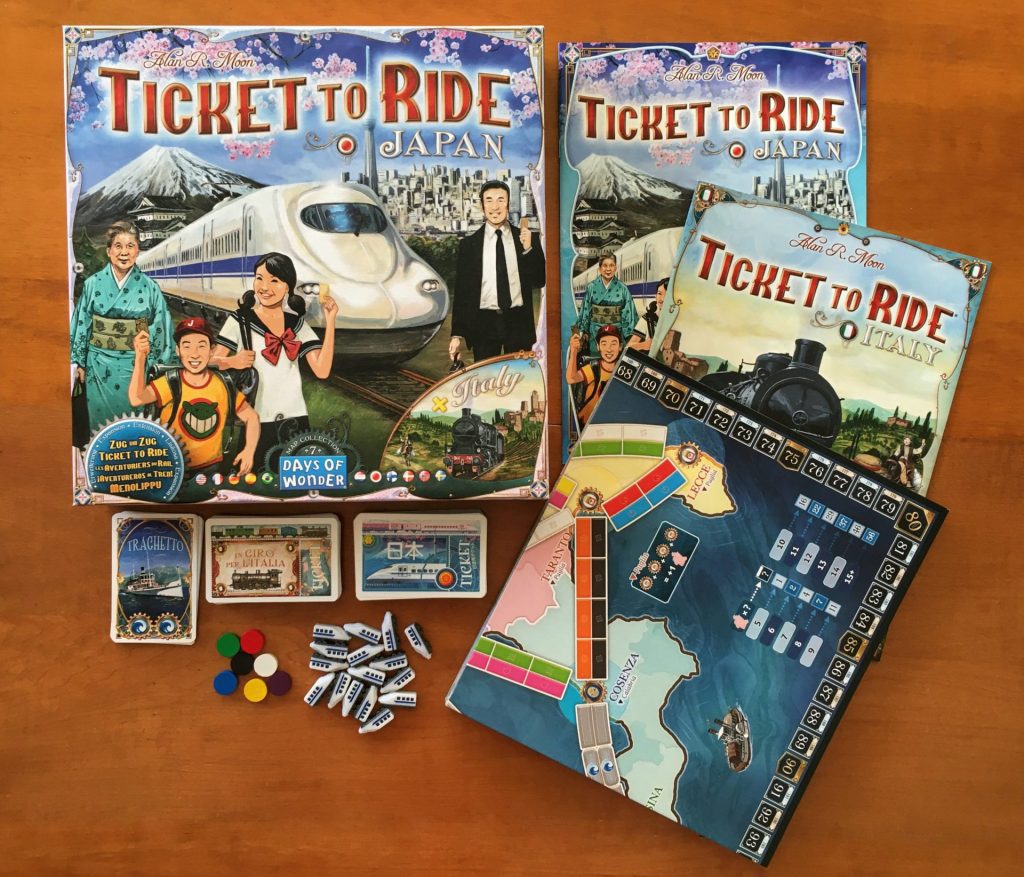
Ticket to Ride: Italy
Looking at the map of Italy, you’ll notice triple routes (like those found in Ticket to Ride: Asia) and countries bordering the northern and eastern areas of the map (similar to the countries added in Ticket to Ride: Switzerland). Experienced players will also notice two new additions to this map: coats of arms next to each city’s name and wave symbols on the map’s gray routes.
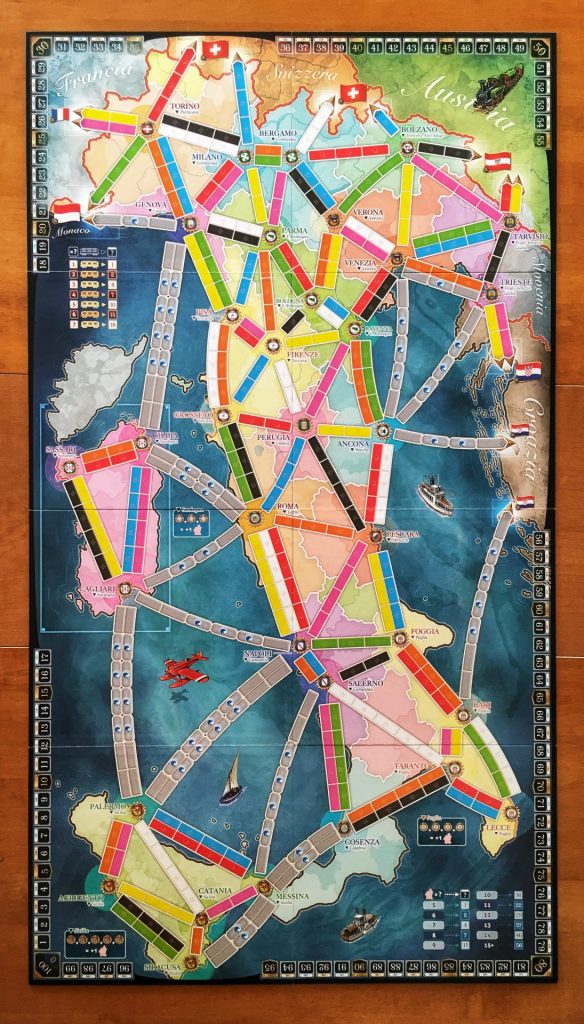
Neighbouring Countries
Much like the Ticket to Ride: Switzerland map, many of the Destination Ticket cards for Italy require players to connect an Italian city to one of its neighbouring countries. However, these countries act as dead ends; if a player has different routes connecting to the same country, these routes are not considered connected to each other.
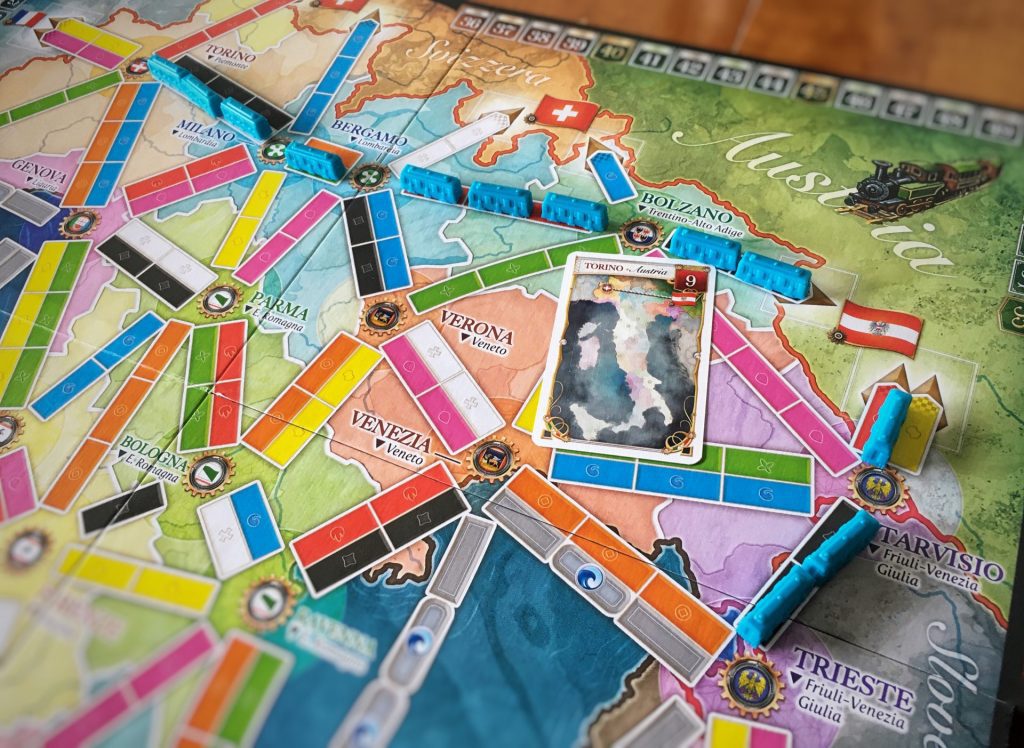
Ferries and Changes to Actions
As in all other Ticket to Ride games and expansions, on a player’s turn they choose to perform one action. In Ticket to Ride: Italy, players have the option of one of the following actions:
- Draw Train Car cards (same rules as the original base game)
- Draw Destination Ticket cards (draw four, keep at least one)
- Claim a route (some rule changes to the gray routes only)
- Draw one Ferry card (new to the Italy map)
Let’s first look at how the “Claim a route” action changes and then the Ferry cards will make a little more sense.
Every gray, uncoloured route on the Italy map is a ferry route and features at least one wave symbol to represent this.
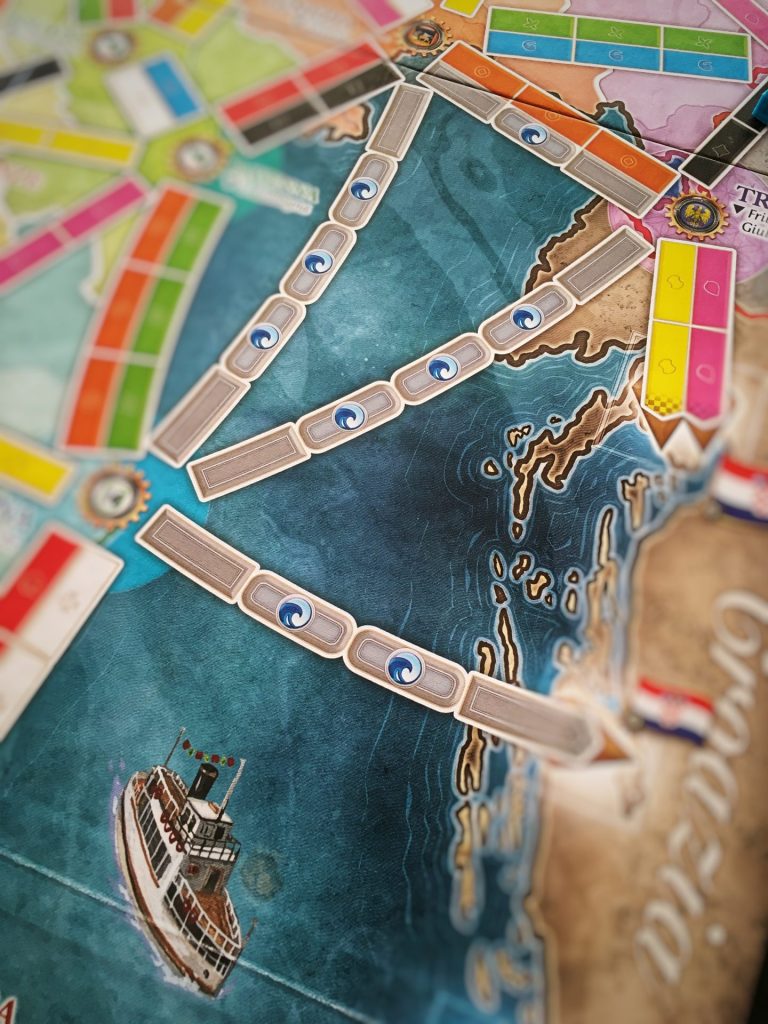
For every wave symbol on one of these routes, a player must play a Ferry card or a Locomotive (wild) card in addition to following the standard rules for claiming a gray route.

Now that you know what the wave symbol is all about, let’s look at the fourth option a player has on their turn: Draw one Ferry card. These cards feature two wave symbols and can only be used to claim gray ferry routes. One Ferry card could be played to cover the cost of two wave symbols when claiming such a route. Additionally, two Ferry cards could be used for four symbols, but two Ferry cards would also be needed for three symbols — even though you would technically be overpaying.
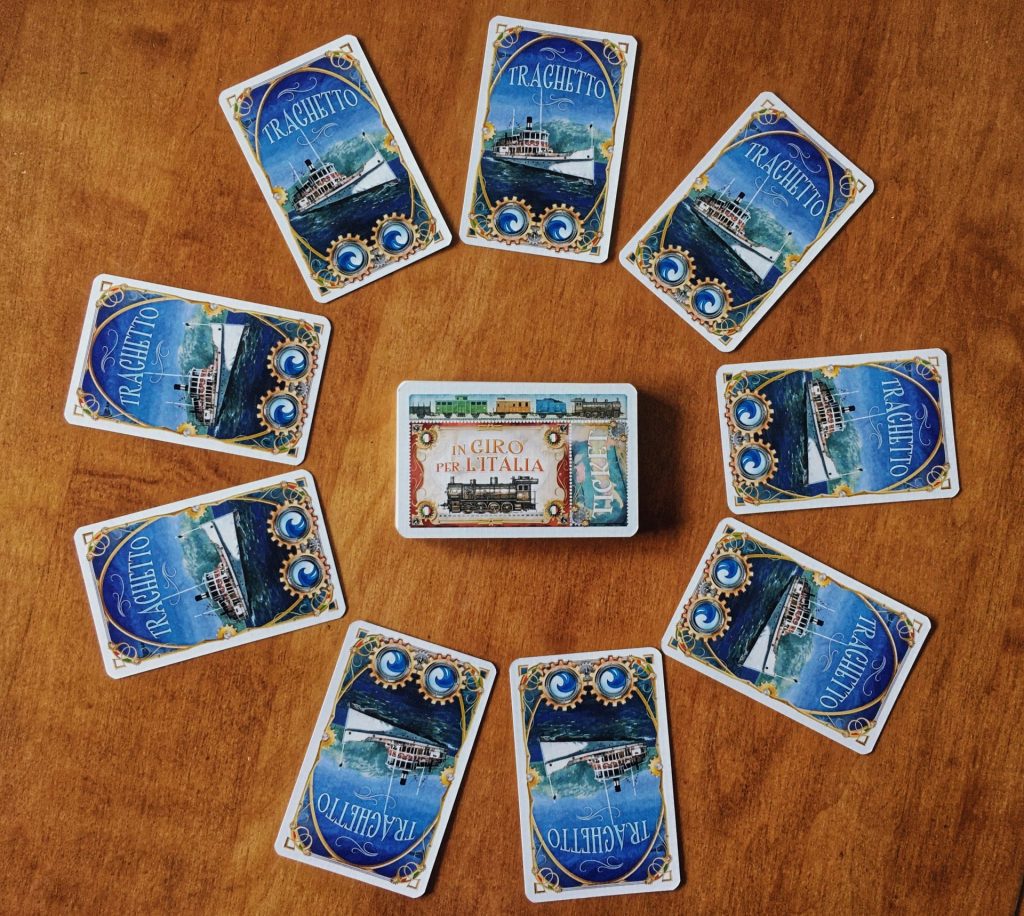
Ferry cards are double-sided so, unlike a Locomotive for example, there’s no hiding whether you have one. Also, a player can never have more than two Ferry cards in their hand; if you already have two, you can’t choose this action on your turn.
Coats of Arms and End-Game Scoring
The game ends in the usual way and players score (or lose) points for their complete and incomplete Destination Tickets. The map of Italy doesn’t have a Globetrotter (most completed Tickets) or Longest Route bonus. Instead, players score bonuses for the regions they connect — and this is where the coats of arms come into play.

Each city has the name of the region it belongs to and the region’s coat of arms next to its name. For each different region a player connects, they score points based on the table pictured above.
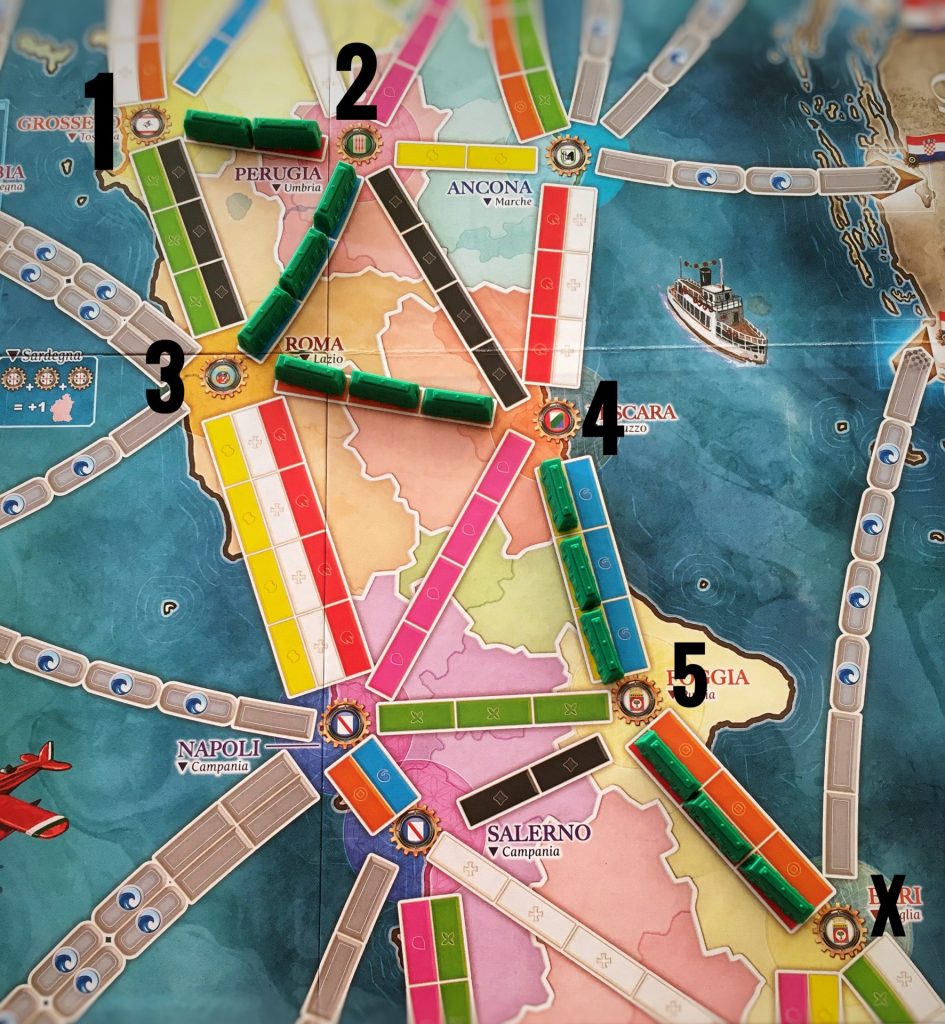
It’s important to note that players score region bonus points for each of their distinct networks (group of connected trains) so it can be beneficial for players to connect their routes into a single network to maximize the points they’ll score for this bonus.

Finally there are three special regions on the Italy map: Puglia, Sardenga, and Sicilia. Each of these counts as two regions for the purposes of the region bonus scoring if a player connects every city in the same network.
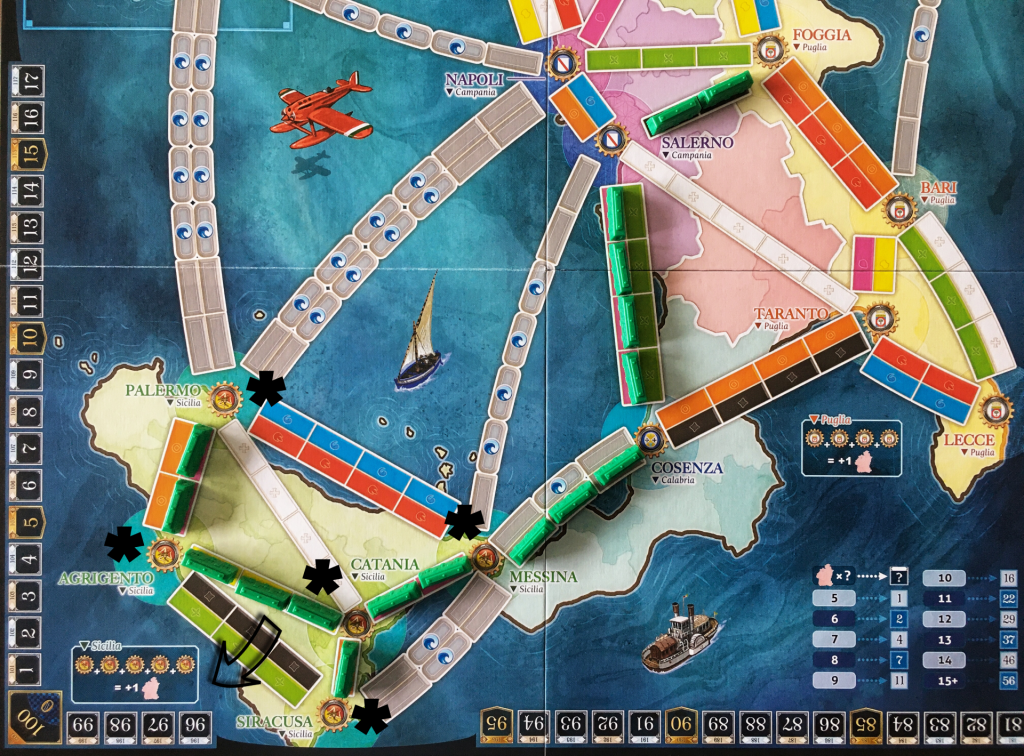
Ticket to Ride: Japan
There are two notable differences on the Ticket to Ride: Japan map: most of the gray routes feature a bullet train icon and there are two unusual, distinct areas that sort of float above the map layout of Japan.
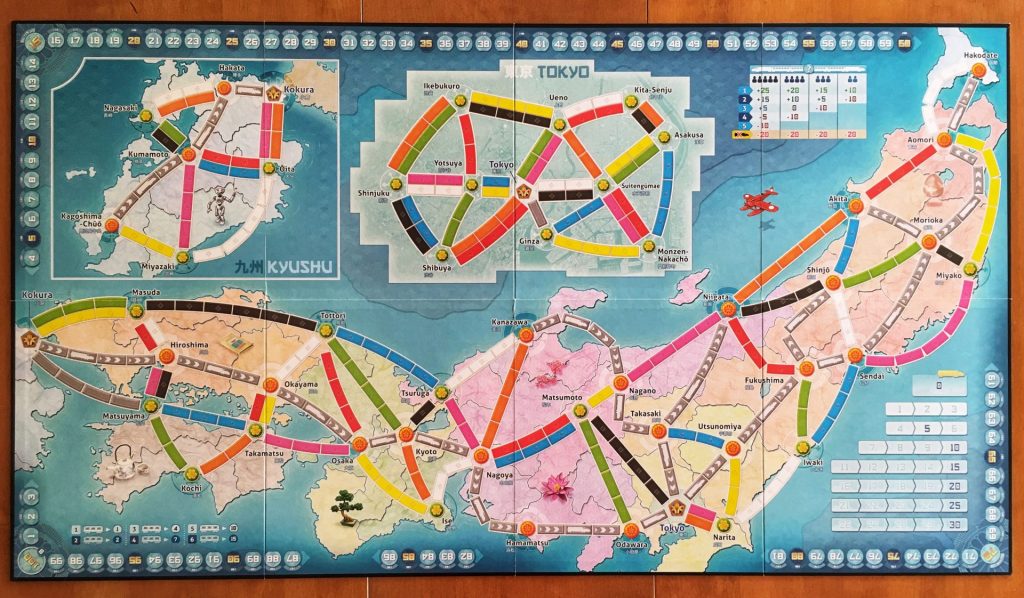
Bullet Trains and Changes to Actions
A player only has one of three possible actions they can perform on their turn (just like the standard Ticket to Ride game), but you might have guessed that there are a few tweaks to these actions when playing with the Japan map. These actions are:
- Draw Train Car cards (same rules as the base game)
- Claim a route (some changes, notably the introduction of bullet train routes)
- Draw Destination Tickets (draw three, keep at least one)
Claiming a coloured route in Ticket to Ride: Japan works the same as in any other Ticket to Ride game — as does claiming a gray route (with or without a bullet train icon). However, the gray bullet train routes on the Japan map are used and scored differently. In Ticket to Ride: Japan, players are working to lay their own network of train routes, but they are also working towards collectively building up the country’s bullet train network. A bullet train route can be used by any player to complete their Destination Tickets, regardless of the player who initially claimed (“built”) the route. This is shown by placing a Bullet Train miniature on the claimed route instead of your own coloured trains.

Once this is done, instead of scoring points for the bullet train route as you normally would, the player advances their Train Progression marker by as many spaces as the number of cards they played to claim the route (i.e. three cards played, advance your marker three spaces). At the end of the game, players score points based on their contributions to the development of the bullet train network.
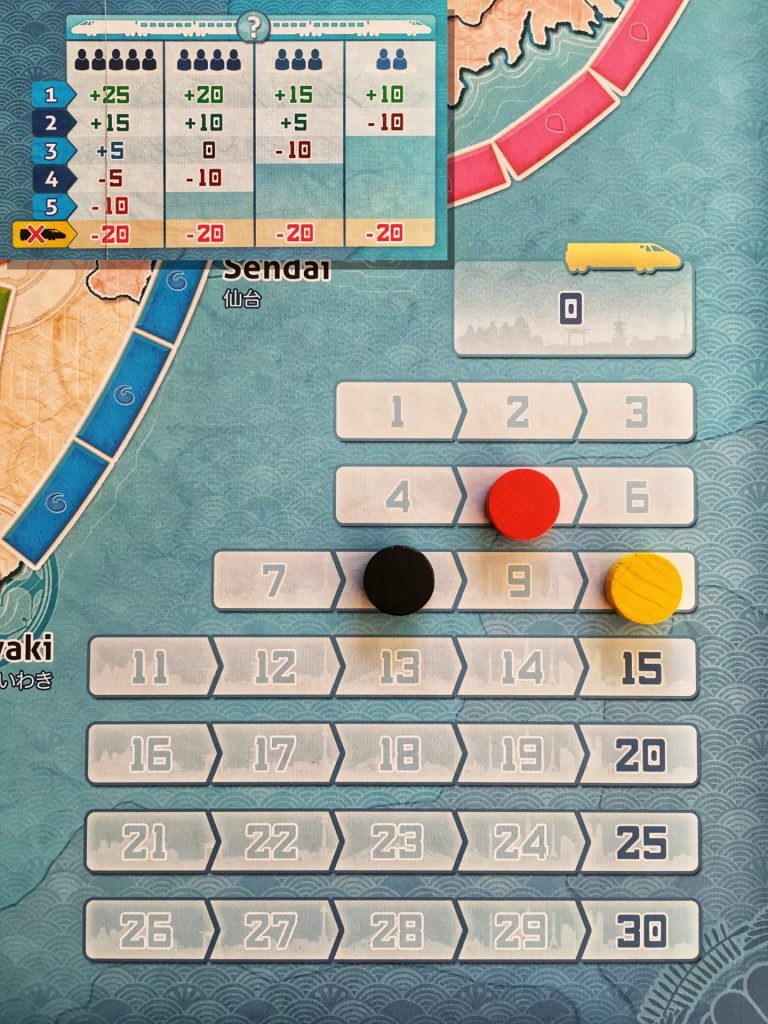
As briefly mentioned, when it comes to scoring Destination Ticket cards at the end of the game, a player can use a combination of their own coloured routes and the built bullet train routes to complete their Tickets — regardless of whether they were the player to claim the bullet train route or not.
Kyushu Island and Tokyo Subway
The Japan map also features two “zoomed-in” areas: Kyushu Island and the Tokyo Subway.
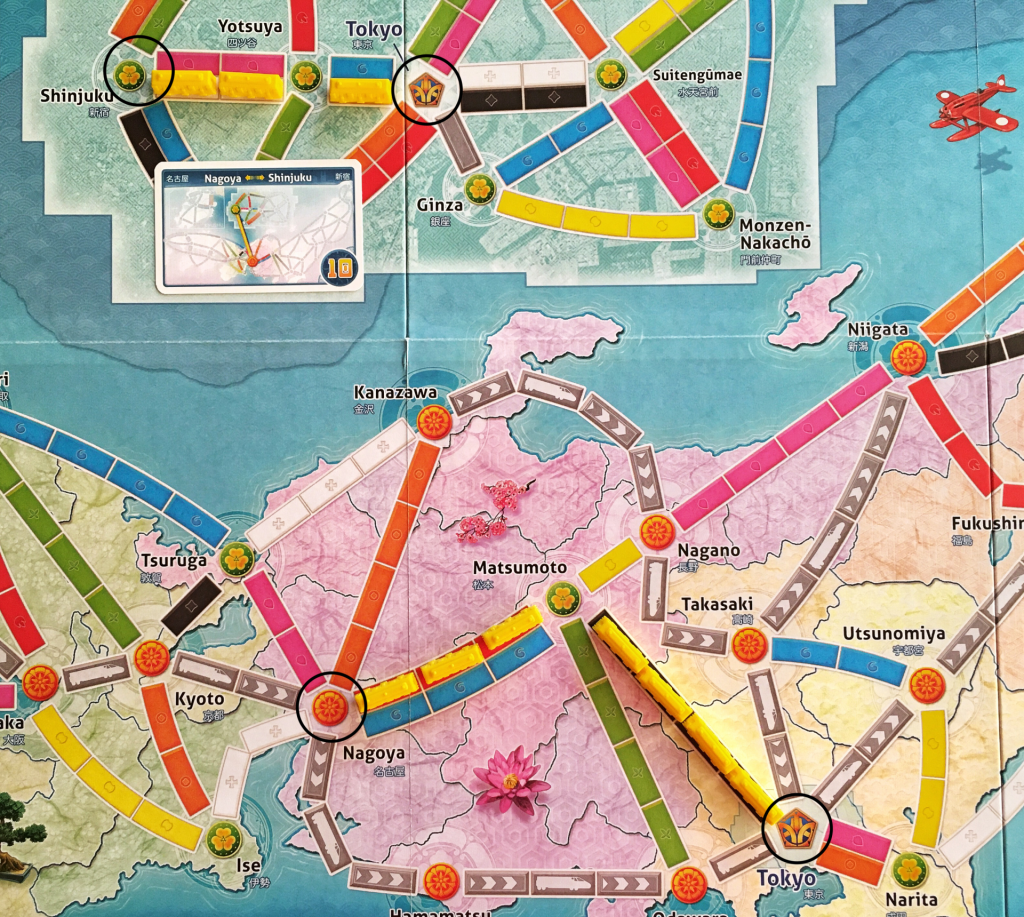
Connecting to cities in either of these areas is a bit tricky for players to wrap their heads around initially, but it quickly makes sense once you get playing.
End of the Game
The end of a game of Ticket to Ride: Japan is triggered when one player gets down to 0, 1, or 2 trains and when there are 0, 1, or 2 Bullet Train miniatures left in the supply.
Players score (or lose) points for their completed Destination Ticket cards and their position on the bullet train track. There is no Globetrotter or Longest Route bonus for this map.
Thoughts on the Maps
It’s no secret that I love Ticket to Ride and while I enjoy most of the expansion maps, I don’t love them all. How does Ticket to Ride: Japan & Italy fare? One of these maps I really like — I’d probably put it in my top 5 favourite maps to play — and the other map is just okay.
Italy
Of the two, the Italy map sounds like it would be the most complicated but in reality it isn’t. The extra action you can take on your turn doesn’t add too much complexity to the game and the region bonus scoring isn’t too difficult to grasp either. The Italy map actually reminded of another route-building game, the Spiel des Jahres-winning Thurn and Taxis. Both Thurn and Taxis and the Italy map have a little more depth to them than the original Ticket to Ride game, but not so much that the game stops being of a family-friendly weight.
For gamers looking for just a little more from Ticket to Ride, the Italy map is the way to go; for experienced gamers who want a deeper experience from Ticket to Ride, Italy won’t be the best fit. I fall in the latter of the two and as such, the Italy map wasn’t my favourite — not because it’s rubbish, but because I feel like I’m not the intended audience for it.
Japan
Ticket to Ride: Japan, on the other hand, was a whole other beast. The introduction of the bullet train jostles what you know about playing Ticket to Ride; no longer are you working to selfishly claim your own routes, showing no mercy as you trap and block other players from reaching cities. Instead you now are almost working collaboratively to develop the bullet train network, which any player can use as if it was their own. But this collaboration is still a vicious waiting game — do you build the bullet train to guarantee you’ll complete your Ticket or do you wait to see if another player does it for you? It’s a drastic change to the Ticket to Ride gameplay, but a welcome one.
The first time I played with the Japan map, I lost miserably. For one, I underestimated the importance and the reach of the bullet train; players begin the game with only 20 of their own coloured trains — compared to the usual 35 to 45 depending on the map you’re playing. When deciding which Destination Ticket cards to keep, it felt impossible to connect Hakata (on Kyushu Island) to Miyako, for instance. How could I possibly connect the two coasts with only 20 trains, even if I did also use the bullet train!? Let me tell you, by the end of the game it had happened. Even in my defeat, I was impressed by how only a few changes could alter the Ticket to Ride gameplay so dramatically. It’s great!
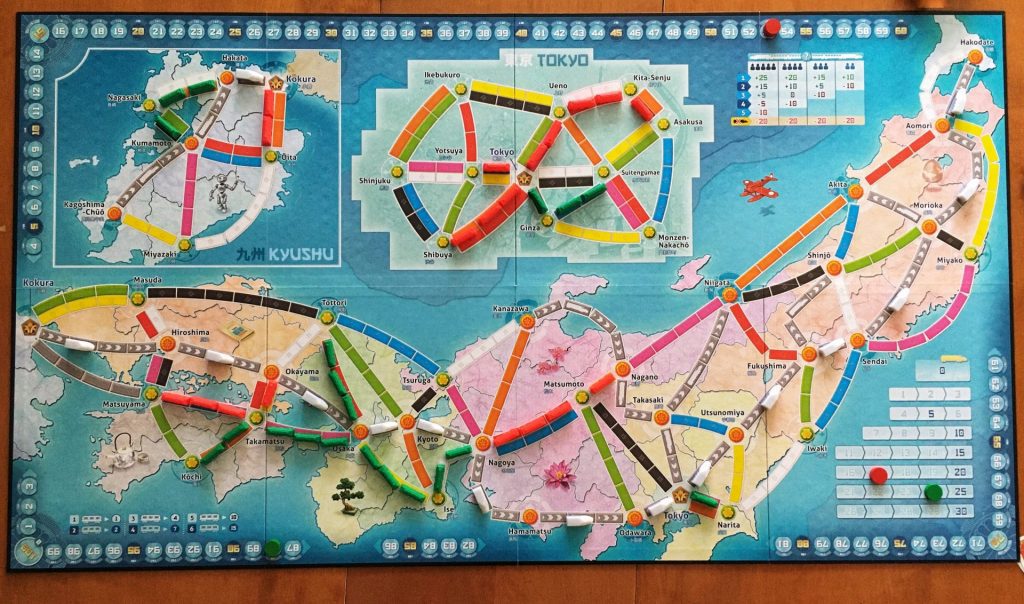
Final Thoughts
In terms of production, everything is the level of incredible Days of Wonder quality you’d expect. My one gripe, though, is with the box size: the length and width are the usual “Ticket to Ride size”, but Ticket to Ride: Japan & Italy is deeper than the other map expansion boxes — almost double the size — and for no apparent reason. (I tested this by fitting the components in my Ticket to Ride: Netherlands expansion box). It seems like the map box’s depth has slowly been increasing since 2015’s United Kingdom & Pennsylvania release. Does this make me a little grumpy because it now means I have to reorganize my Ticket to Ride shelves with each new expansion? Yes. Is it the end of the world? Absolutely not.

Ticket to Ride: Japan & Italy is a solid expansion for any Ticket to Ride fan; the Italy map is a nice step-up for casual gamers looking for a slightly more complex gameplay experience and the Japan map is a delightful change for Ticket to Riders who are looking for more depth than just a tweak or two to the standard gameplay.


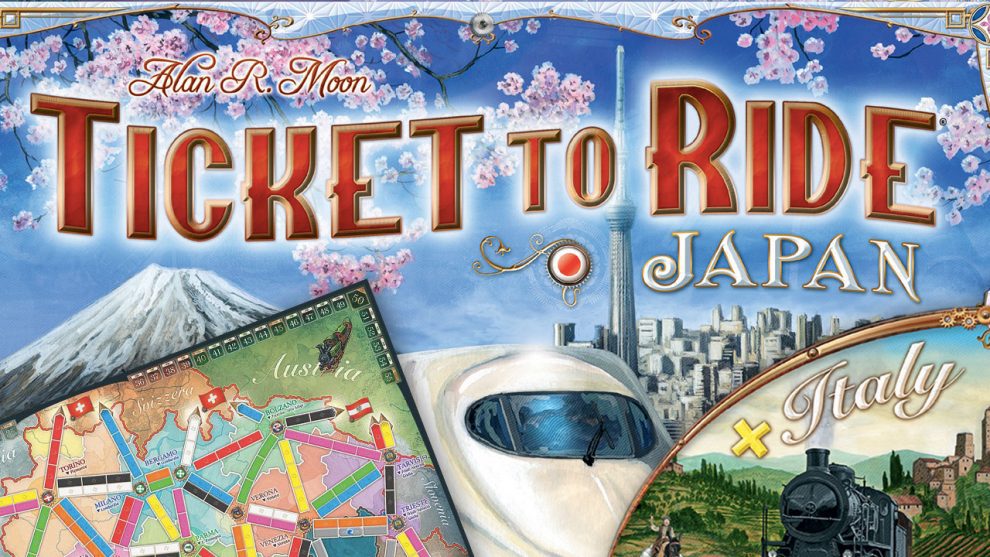









I am having great difficulty trying to understand how to score the bullet train. The description is not clear to me. Can you further clarify. Please simplify and expand on the instructions.